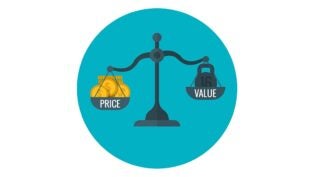9 Revenue Models That Can Keep Your Business Thriving
By: Marty Zwilling

Every new business quickly realizes that revenue coming in every period on a committed basis is the Holy Grail to survival and growth. Based on traditional research, getting new customers is five to ten times harder than getting additional revenue from existing customers. Thus the subscription model (low fixed monthly payments), has become the norm for new products and services.
In fact, subscription pricing has been around for a long time for magazines, cloud-based software, and gaming, but now I’m seeing it used for just about anything, including for more stylish clothes via Mr.Conection, gourmet foods via TryTheWorld, and toys for your kids via Pley. If you are an entrepreneur not using this model, it may be time to consider a pivot.
In fact, in a classic book “The Automatic Customer,” by John Warrillow, who runs the successful subscription based research business The Value Builder System™, I saw the nine most common variations on the subscription model today. If you are looking to start a new business in any domain, it’s definitely worth your time to check your fit for one of these models:
- Membership website model. With this model, you provide website access to insider information for a regular subscription payment. It works best in a tightly defined niche market, like antique car owners, or rare-coin junkies, or woodworking enthusiasts, where experts hare hard to find, and members can gain from interacting with each other.
- All-you-can-eat content model. By providing access to a large variety of titles, like NetFlix with streaming movies, or Hulu for TV shows, with new content added regularly, there is always a reason to keep up your subscription. If you already have many followers for some limited free offerings, this also becomes a natural freemium
- Private club model. On the other end of the spectrum, if your service or experience is in limited supply, make it a status offering for the strivers out there who want to act and feel like affluent consumers. Here the key is to convince customers that you have something really rare, and maybe even entice them into a long-term but affordable relationship.
- Front-of-the-line model. If you can help with a relatively complex product or service, this one is especially appealing to customers who are not overly price sensitive, or ones for whom waiting in line can have catastrophic consequences. It works for the need to resolve IT issues in a small business, to avoiding long lines at popular clubs and hotels.
- Consumables model. You should consider this subscription model if you sell things that naturally run out, like Easypeasies diapers or Birchbox for cosmetics. People are willing to pay for convenience, but don’t underestimate the logistical challenges in fulfilling orders and providing services to thousands of subscribers in out-of-the-way places.
- Surprise box model. This model involves shipping a curated package of goodies to your subscribers each period. It may have started with wine club memberships, but has now been extended to include BarkBox for family dog treats, Standard Cocoa for those who love chocolates, and SpicySubscriptions for lovemaking paraphernalia.
- Simplifier model. Everyone these days wants to simplify their life, so this subscription model works well for personal service businesses, like pet grooming, tutoring, window cleaning, and even bookkeeping. The key is making sure the customer doesn’t have to remember the scheduling, deal with immediate variable payments, or worry about quality.
- Network model. This model works best where your product or service utility improves as increasing numbers of people join in. It was popularized with dating sites and LinkedIn, but now is popping up with many services, like Zipcar for car-sharing, Spotify for music sharing, and WhatsApp for international messaging for a low predictable fee.
- Peace-of-mind model. This one is an extension of the insurance model into new domains. For example, Amber Alert GPS will make sure your kids don’t wander outside of safe zones, Site24x7 will let you know if your web site is down, and Social Studio monitors social networks so you know what people are saying about your brand.
If your startup is in the Business-to-Business (B2B) world, you need to realize that the subscription model has evolved considerably since SalesForce.com introduced Software as a Service (SaaS) way back in 1999. Popular variations of cloud subscription services now include offerings billed as Platform as a Service (PaaS), and Infrastructure as a Service (IaaS).
So now may be the time to start or transform your business into a recurring revenue engine with subscriptions, or just add an option to get some extra sales growth. But be aware, these models bring with them a whole new psychology of selling, supporting, and measuring your success with customers. Do your homework before jumping in with both feet.














